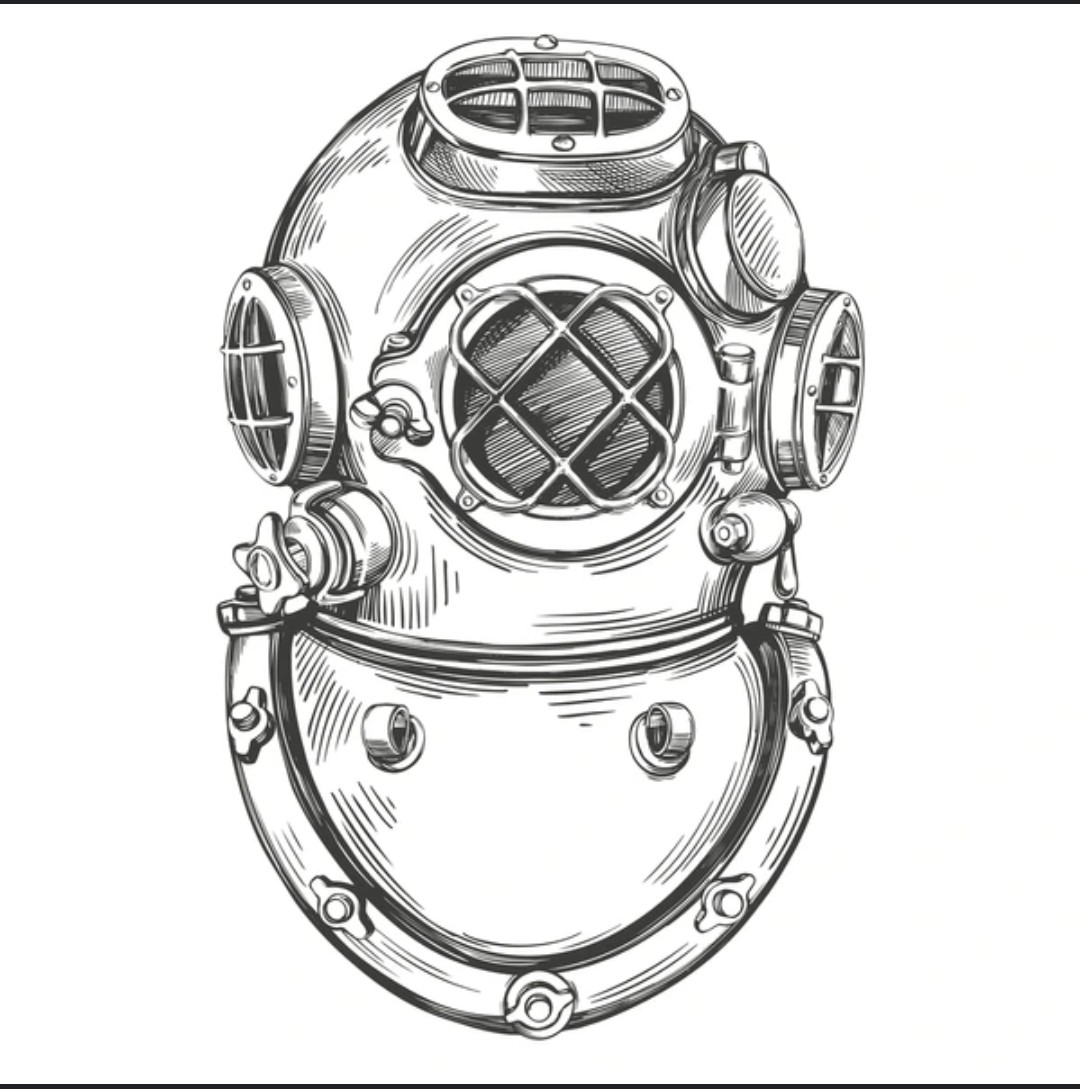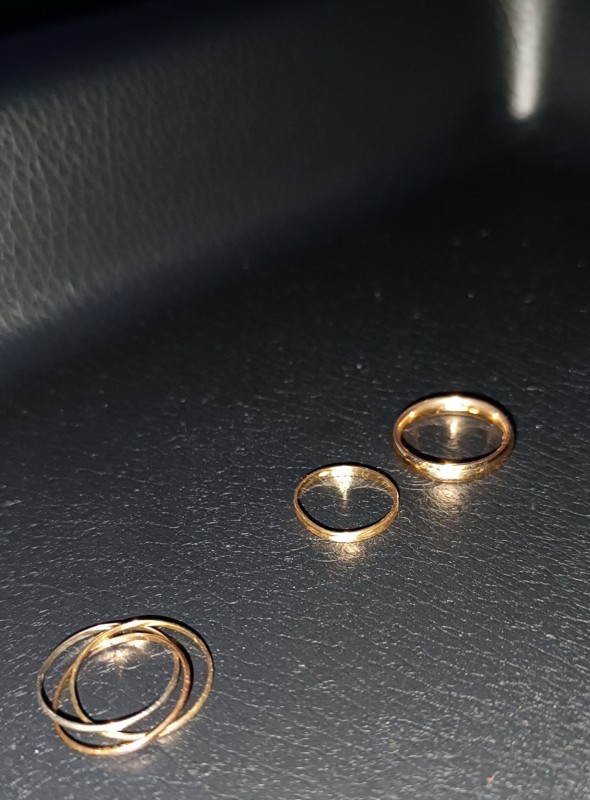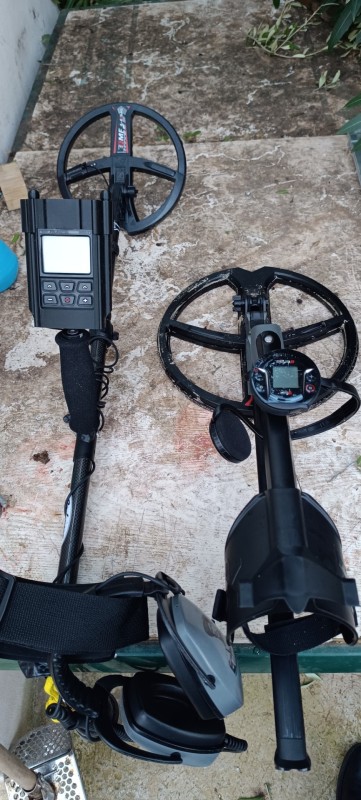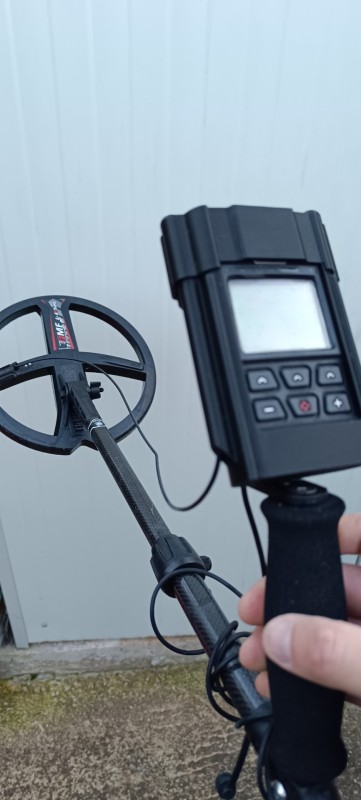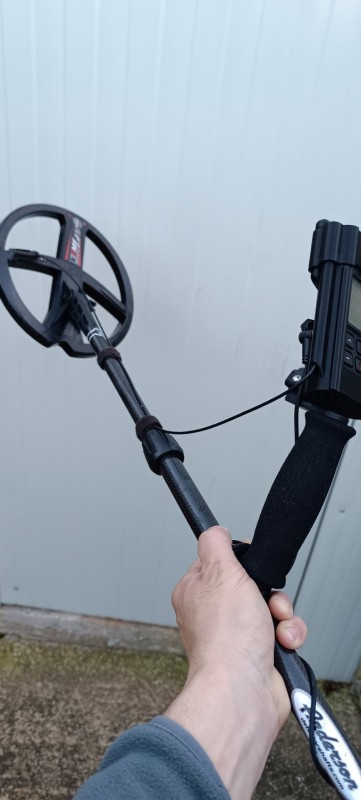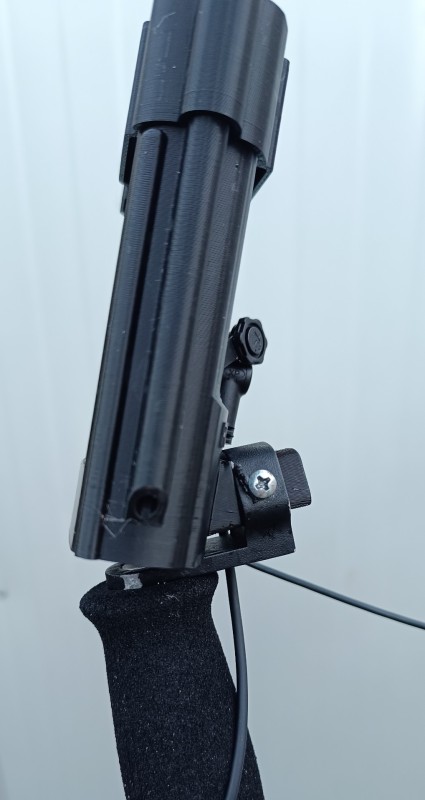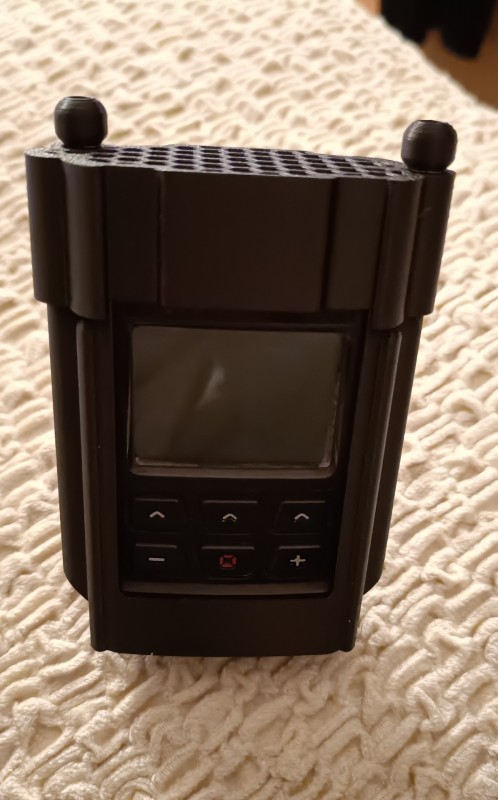-
Posts
816 -
Joined
-
Last visited
-
Days Won
1
Content Type
Forums
Detector Prospector Home
Detector Database
Downloads
Everything posted by Skull diver
-
I want to say a few words of praise about the RCdigs mount. After at least six dives, I confirm the initial impressions of the solidity and ease of installation. It was enough to take care of the hardware with petroleum jelly and the whole thing unscrews very easily in case of maintenance. I should add that the antenna cable tunnel, in perfect position, allowed me to mount on the remote its clip avoiding the strange, tight end bend. I finally use the D2 underwater without any worries.
-
You're right. Three colours ring
- 10 replies
-
- jewelry detecting
- gold found
-
(and 1 more)
Tagged with:
-
Hhmmm... Let's talk about what I see there... Nice edge to hope for, but...Still high tide and strong backwash (the one you don't want to be caught in)...Inshore wind and absolutely no way to stay lower than that...I'd do the same, just without detector and walking to breath fresh air by the ocean🥰
-
In the common imagination, beach hunting is based on the first few feet of shoreline, sometimes at the top, sometimes at the edge of an eroded step, sometimes in flooded pools after a decent tide. All of this in my area is out of the question and being forced to enter the water and totally submerge, today, after three sessions I summarize what I am observing. On the first day, in a spot I hadn't been to in over 10 years, I pulled out a triple ring and amazingly not far from where I found a twin 10 years earlier. Finally, the first piece of 2024🤔. On the second day, a really thin ring, different spot, and really unusual water depth. It all ends today, with the third session in the same spot as yesterday, but this time even deeper at about 5 meters and very far from the shore. A man's wedding ring, after a century of other much thinner and lighter finds. The outer sandbar may remain the final frontier. Rarely, pits can open at such depths, and if they do, it is generally because of a play of currents with which one should not mess around. I am considering a floating platform of the bodyboard kind, to be kept on the surface as a safety device for a return to shore or at least to have something to cling to effortlessly and return to shore with the help of the board and fins. By the way, finally some shines.
- 10 replies
-
- 24
-

-
- jewelry detecting
- gold found
-
(and 1 more)
Tagged with:
-
I will soon have to solve the same problem to use Ws6 with the jack adapter (I should buy the Ws4 mount). The more I look at the original clip, the more I think of using a threaded rivet to fit inside the clip on the rod and a thin plate as a washer, to close with a flat head screw under the Ws6. That way the clip attachment would just be to hold the whole thing in the correct position, but the real fastening would be at the screw
-
😂I'll see if another remote and coil will do the trick, but really in the future...As for now I just want to enjoy the finally complete setup
-
Although I could open a new post about it, I am adding a small modification that may be one less job in making the D2 suitable for underwater use. I finally found the 25" antenna cable available. In my setup, a hole in the rod and creating an internal coil with the excess length proves of little advantage, considering that the RCdigs mount sits on an additional adapter on the Anderson handle, I preferred to run the antenna cable from the mount to the coil on the outside. All in all, with far fewer turns around the rod, I am just fine with this....
-

Wsa II Headphones Connect To Deus II Detector
Skull diver replied to Treeism041963's topic in XP Deus II Forum
@Treeism041963 https://www.instagram.com/reel/C1FEcAqIAmn/?igsh=dTJlYWNidmMxZXN6 👌 -
I have tried several variations of silicone grease. White, blue, stringy, PTFE, but I've only been using a trivial jar of Vaseline for years now 🤣
-
@F350PlatinumI found it again recently https://www.ebay.it/itm/373670410684?mkcid=16&mkevt=1&mkrid=711-127632-2357-0&ssspo=nrACo6DwQ-m&sssrc=4429486&ssuid=WkrhwvHkSuu&var=&widget_ver=artemis&media=COPY
-
-
First, I want to thank everyone for their technical input and explanations on this topic. All of this, leads me to a perhaps silly conclusion and probably to state a theory that I come to late. The widest spectrum of frequency variation obviously resides in the mono program. As a consequence of this, it results in the most effective of programs in selecting a "clean channel." Unfortunate point, is that in saline or humid environment, there are not the necessary filters for proper and stable use. That said, mf modes are thus a balance of frequencies with which to deal with different combinations of terrain and are less effective in noise cancellation due to even the slightest collision of at least one of the waves involved with interference. I am therefore with a dog biting its own tail in front of me in an attempt to isolate an ideal limiting frequency for dealing with saline underwater theoretically between 27 and 37 kHz...
- 21 replies
-
- advice and tips
- detector tech
-
(and 1 more)
Tagged with:
-

Cheap VLF Scuba Detector For Under Au$ 900
Skull diver replied to Erik Oostra's topic in Metal Detector Advice & Comparisons
I have to admit that this experiment was among the Christmas ideas but I convinced myself not to do it because soon, with 7 detectors I will have nothing but to throw away shabby batteries due to disuse. -
True. And We can only take note of the frequency limit choosing 14/24/40 as the max setting.
- 21 replies
-
- 1
-

-
- advice and tips
- detector tech
-
(and 1 more)
Tagged with:
-
I neglected to mention this aspect.... I must have forgotten the lowering of about 3 kHz on 0 and the raising of as many 3 kHz on 6. According to this concept, on shift 3 you set the real maximum frequency of 14/24/40 kHz. (The coupled low frequency still remains invisible in the setting.)
- 21 replies
-
- advice and tips
- detector tech
-
(and 1 more)
Tagged with:
-
I cannot comment on whether the shifts match the mono program frequencies, partly because in MF the low frequency or at least lower than the cut off @ 40kHz also interacts. However, I can assume with certainty that 40Khz "max" in shift 0 is much less chatty than on shift 6. Immersed in salt water there is no EMI that can justify this behavior other than the direct reaction of saline, on the kHz increase.
- 21 replies
-
- advice and tips
- detector tech
-
(and 1 more)
Tagged with:
-
Exactly 🫢. Even if I bought dozens of gloves pairs the left hand last no more than two sessions and at a certain point I just don't care anymore for holes😑
- 7 replies
-
- underwater detectors
- minelab detector
-
(and 1 more)
Tagged with:
-
It was...Like 99% of the stuff I find usually...Lighter than others but that reddish shine always warmt the heart
- 7 replies
-
- 1
-

-
- underwater detectors
- minelab detector
-
(and 1 more)
Tagged with:
-
I found an excerpt of a session. That day, apart from a huge uncovered surface, almost no targets and a purely luck find. https://www.instagram.com/reel/C2XNwsgq7Uu/?igsh=YzcwaDQ2NmIzbXJt
- 7 replies
-
- 5
-

-
- underwater detectors
- minelab detector
-
(and 1 more)
Tagged with:
-
I can't think of a better way to explain the concept, but if I have to define the use of full tones that I found myself in, this is it: Trying to isolate the middle tones, I expanded from 30 to 60 first and from 30 to 45 later. Although it would be simpler to use 3 or 4 tones extended up to 99 and giving a specific pitch to each, using full tones better distinguishes a valid tone from one that jumps around and is hardly a target worthy of excavation. However, the original tone breaks were more effective before I modified them. The reason may be that somehow you are going to break up the progressiveness and modularity of the sound. All of this should be tested by sampling objects and varying the tone breaks as best suits one's hearing, using the offset to vary the peaks.
-
I recently stumbled upon the use of the mono program by accident and noticed a lack of a specific data point in the mf programs. Although I understand the minimal variation in frequency multiples and the almost no importance other than to clean the signal from interference, I still noticed that between shift 0 and shift 6, the frequency can slip a lot. In my case, I suffer in saltwater from a difficulty in finding a sweet spot between 24 and 40 kHz or at least visualizing the actual setting. This is quite different from the autotune scan, believe me. I am referring to the lack of an exact kHz number that I justify with more frequencies working, but that does not help in understanding what level you are working at. If I take into account in mono 40 kHz with a 0 shift, I assume I am reaching about 32 kHz. In mf this should translate the same way with the unknown of the lowest frequency. There are missing pieces in this theory but the lack of the number of kHz relative to the shift in use does not help me.
- 21 replies
-
- advice and tips
- detector tech
-
(and 1 more)
Tagged with:
-
If I may, I recommend that you set tone breaks carefully when using full tones. Expanding or decreasing the ID portion for each tone also changes the audio behavior of the melody, and I am certain of this after changing the basic parameters. I hope I explained correctly, but specifically I created divisions of about 15 points between each signal and got 5 portions by focusing on the middle zone. There, that makes the signal extension less understandable than when I used full tones the first time. The offset may help in giving more footprint than iron in direct proportion as the number goes up.
-
That looks like a nice one, got a link? That shaft is actually a Golden Mask product, and I have had my eye on it for a couple of years. There is an adapter so you can mount the Deus like the Deus2, but it must be purchased separately. I recommend intercepting a Golden Mask dealer in your area.
-
Done! I just bought mine
-
I must admit that looking at these shots I am relieved that we are slowly seeing solutions to this problem, even if they are aftermarket and created by enthusiasts. It annoys me on the other hand, that such a structural fact was not foreseen at the factory design stage. I have to admit that after a year of use, I have now reached an extreme degree of confidence in the instrument and a killer program but this having to worry about the remote unhooking at the first opportunity, no, I cannot tolerate that.

